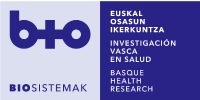Studies aimed at developing a patient-centred system that selects and adapts the optimal healthcare intervention for the chronic patient in each situation based on the priorities and needs of patients, their caregivers, their family and the needs of the healthcare system itself, ensuring an efficient and responsible use of resources at all times and needs with an integrated vision of their conditions.
This includes the replacement of outpatient interventions with remote or automatic interventions whenever possible, adaptation of the care level (e.g. acute beds, long-stay beds, home-based hospitalisation), reinforcement of rehabilitational and preventive interventions and reduction of unnecessary attendance.
The outcome will be the systematic adaptation of different interventions to health needs and priorities and those of the system such that a no more intrusive or expensive intervention than strictly necessary is used and that the decision regarding the intervention is increasingly shared by the professional and the patient.
Sub-programmes:
- Application of new technologies to the treatment of chronic diseases.
- Psycho-social interventions and treatments in chronicity
- Drug use.
- Development of new products and technologies.
Relation of european projects:
Projects:
- C3CLOUD: A Federated Collaborative Care Cure Cloud Architecture for Addressing the Needs of Multi-morbidity and Managing Poly-pharmacy
- TITTAN: Network for Technology, Innovation and Translation in Ageing.
- Mastermind: MAnagement of mental health diSorders Through advancEd technology and seRvices – telehealth for the MIND
- FI-STAR: Future Internet Social and Technological Alignment Research
Relation of Kronikgunes’ projects:
4. Telemonitoring of chronic patients and those with multiple comorbidities from primary care (“TELBILBA project”)
7. Electronic platform for managing information concerning diabetes and cardiovascular risk factors for professionals and patients: Design and monitoring after an update to three evidence-based clinical practice guidelines.
8. Continuation development of an evidence-based programme in primary and secondary psychotic episodes.
9. Control of multiply admitted COPD patients using information technologies: The importance of physical activity.
11. Control of readmitted COPD patients using information technologies: The importance of physical activity.
19. A technology investment intervention involving application of the GUNFT guideline for improving the management of pharmacological prescription in osteoarthritis.
21. Impact of the intervention of a trained nurse in intravenous therapy on treatment days, results of the venous access devices and the satisfaction of patients with prolonged intravenous therapy.
24. Evaluation of an e-health system for supporting oncology patients.
